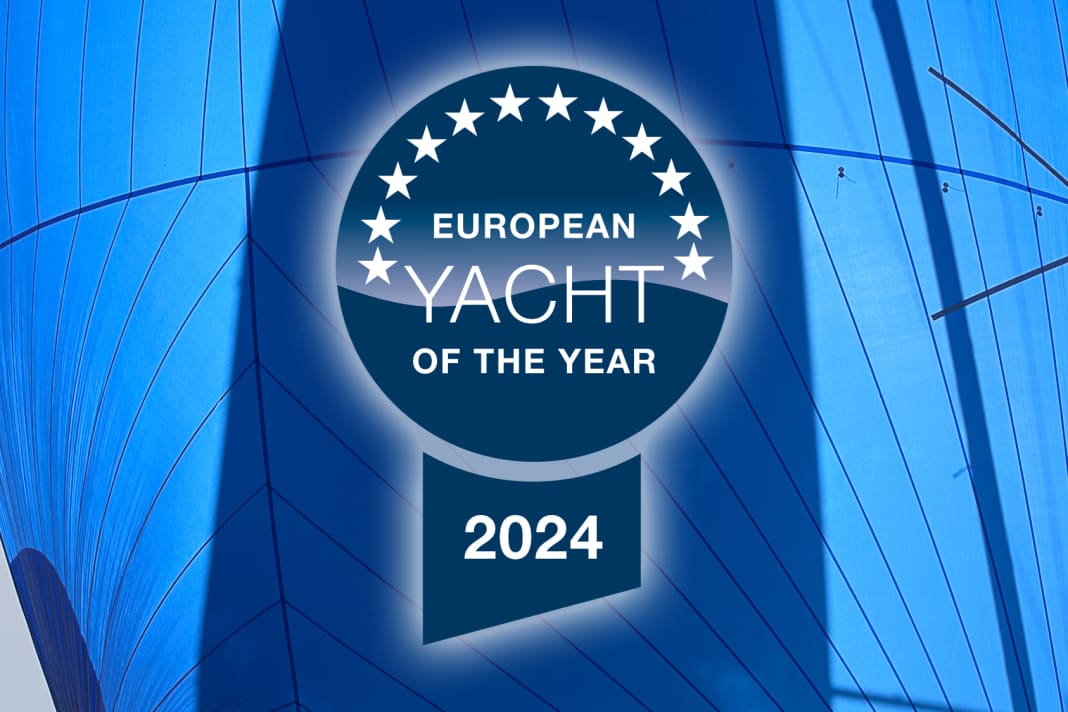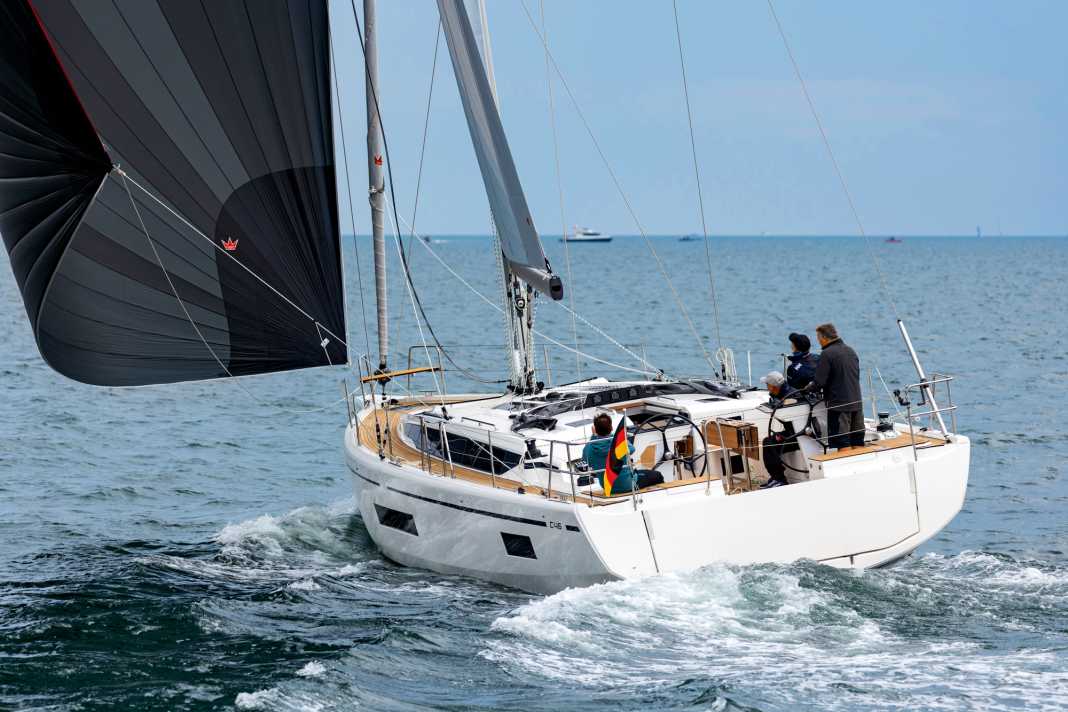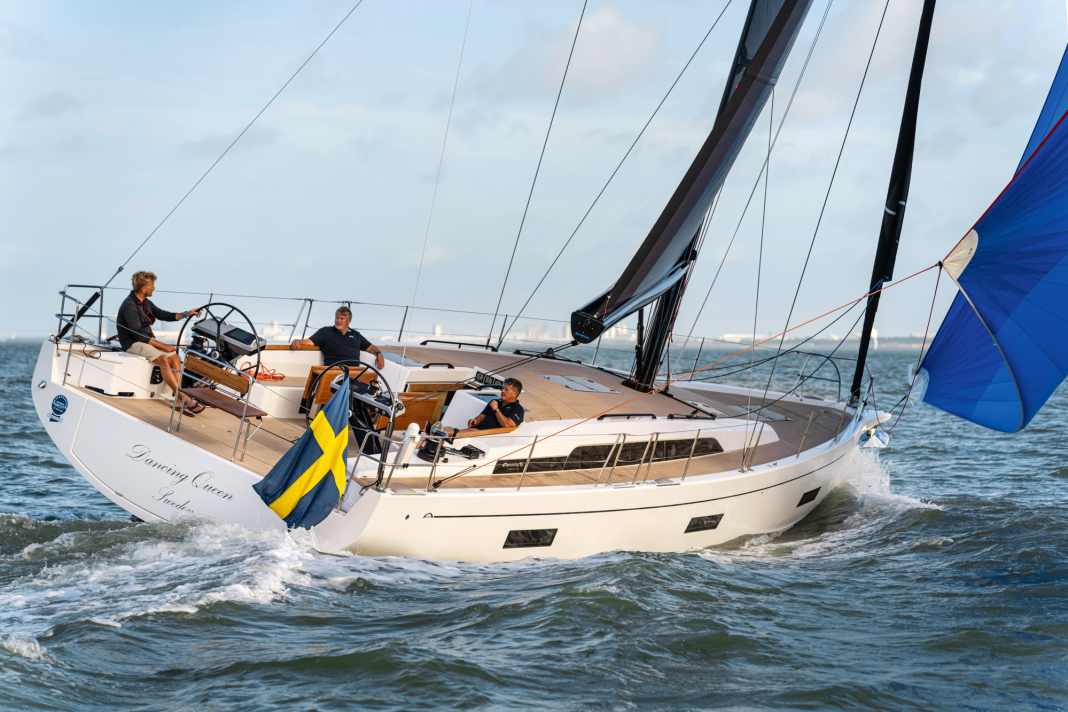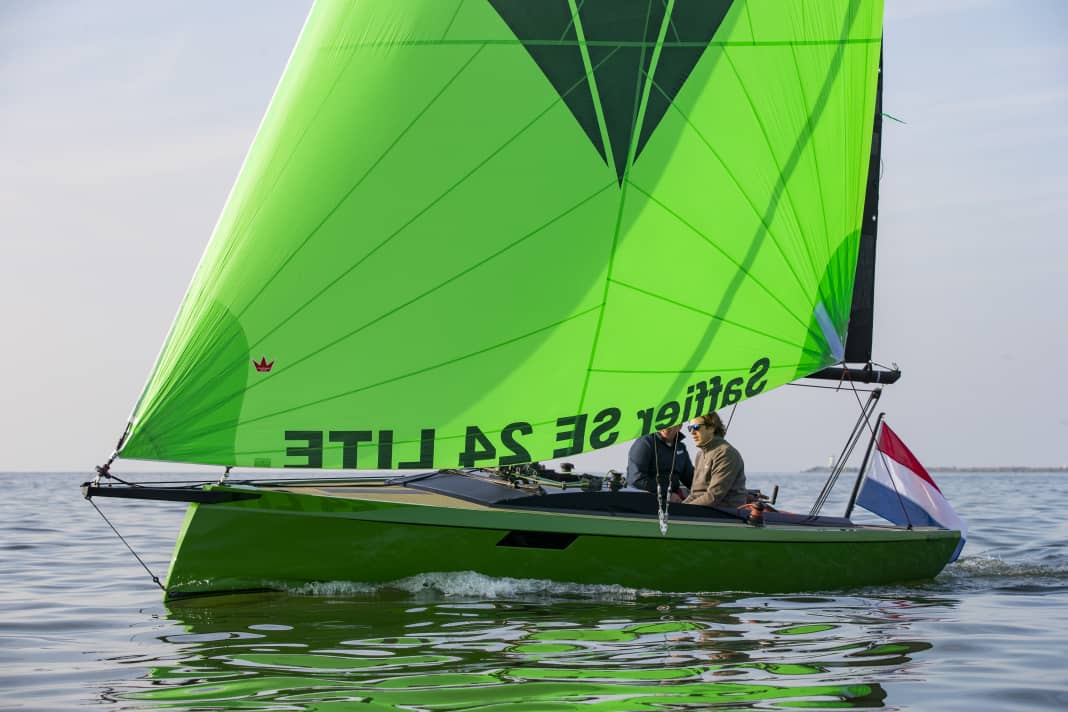Europe's Yachts of the Year: And the Winner is ... The 2024 Sailing Oscars
YACHT-Redaktion
· 20.01.2024






Newcomers and niche providers dominate among the award winners this time. Only one mass-produced manufacturer was on stage at the award ceremony as part of the Flagship Night, which Delius Klasing Verlag organises together with boot Düsseldorf at the start of the trade fair. Bavaria joined the ranks of the honoured with the C46. This is only the third win for the boat builders from Giebelstadt since the European Yacht of the Year Award was first presented 21 years ago in a process that is still unique today.
Many surprises at the European Yacht of the Year Award
Otherwise, new developments from smaller, specialised shipyards won the race - although they have long established an excellent reputation in their respective market segments. Two of them are virtually serial winners: Saffier from Holland, the leader in daysailers, and Outremer, a force in fast cruising catamarans. With their latest successes, both have five titles each; together they now have as many boatbuilding Oscars in their display cases as Beneteau, the world's number one in the yachting industry.


Pleasingly, for the first time in a long time, more than a third of the 21 nominees this year were around or well under eleven metres in hull length; among the award winners, two out of five boats were under eleven metres. Nevertheless, the trend towards large, expensive yachts remains unbroken. Manufacturers are increasingly moving away from the majority of sailors, as this seems to be the only way to achieve adequate margins. Semantics are also being upgraded: Large-series models now appear in brochures as supposed "luxury cruisers".
But there are also positive trends. Sustainability is no longer just a label, but increasingly a programme, as shown by the Bestevaer 36 or the Sun Fast 30 OD.
And here are the winners:
Winner cruising yachts: Bavaria C46






For decades, the once second largest shipyard in the world defined itself primarily through favourable prices. Now it is setting standards elsewhere
The boat builders from the Franconian town of Giebelstadt proved three years ago that something has changed. Back then, after a long break, the C42 designed by Maurizio Cossutti won the European Yacht of the Year title with overwhelming clarity. Now the C46 is following suit, and despite the many well-known competitors, it is once again a clear winner. Although it follows the same basic concept, it raises the bar significantly higher than its 2021 winner in many respects.
As a result, not only the quality appearance has noticeably improved, but also the design and layout on and below deck. The C46 is one of the most versatile boats in the class and is impressive in practically every configuration - whether as a three-cabin version optimised to the owner's wishes with a particularly high proportion of usable and storage space or as a charter boat with up to ten berths in five compartments plus three heads. It benefits from the wide, particularly voluminous hull, even in the foredeck. Unlike its predecessor, the C45, there is no longer a dinghy garage aft; the dinghy is carried on retractable davits. That's a good thing! This allows the space available to be utilised much more effectively.
Visually, the new model appears less squat than the smaller models in the latest series, the C38 and C42. The freeboard remains high and the bow area full. However, the flat, sheer superstructure stretches the lines, especially as the almost seamlessly integrated bowsprit also visually extends the deck. This gives the 14-metre yacht an almost Mediterranean elegance - and closes the gap to the competition, which it is substantially ahead of. No squeaking, hardly any crackling, even with a lot of pressure and waves. In addition, the C46 is pleasantly lively at sea thanks to its above-average sail carrying capacity. A worthy winner!
And this despite the fact that the basic price is deceptive: realistically, you have to calculate at around 500,000 euros for an appropriately equipped boat.
What the jury says
Toby Hodges from "Yachting World" explains the triumph of the C46 with its substance:"Bavaria has increased its quality to such an extent that other large shipyards find it difficult to keep up."
Joakim Hermansson from "Praktiskt Båtägande" in Sweden:"Sailing them is simply fun!"
Strengths
- Plenty of space on and below deck
- Sensible layout variants
- High proportion of solid wood
- Solid workmanship
- Good sailing characteristics
- Precise feel for the rudder
- Panel with automatic fuses
- Only the basic price is favourable
Weaknesses
- Genoa cradle far outside
- Control columns too far inwards
- Sprayhood reduces visibility ahead
More info:
Winner luxury yachts: Arcona 50






The renowned but previously rather conservative brand from Sweden is making a significant leap with this boat - both upwards and forwards
Even in northern European waters, you don't see an Arcona every day. And when you do, it's usually from the stern. Until now, the Swedes have been easy to identify, despite or because of their exceptional status: with proportions that seem almost classic today, low freeboard and comparatively narrow ends. Well, that's over now!
The new flagship, the Arcona 50, is an innovative leap forward. There is hardly anything that connects it to its smaller sisters. In fact, it is almost brusquely similar to the models in the X-Pure series from X-Yachts, especially the X 4.9. No wonder: the designer is the same. Niels Jeppesen, co-founder and mastermind of the Danish competition for decades, moved northwards to Uddevalla after leaving Haderslev, where he revived his philosophy of a fast cruising boat in the upper class in the Arcona 50 with hardly any changes.
However, despite the striking visual proximity, Jeppesen and his design partner Ariadna Pons have not created a mere copy. The Arcona keeps its distance in terms of design and style. At a significantly higher price, it appears more reduced, lighter and more delicate in its lines on the one hand, but is even more technically sophisticated on the other. The bulkheads, doors, tables, floorboards and companionway are made of sandwich laminate, some with an ultra-light honeycomb core. The keel fin is narrower and more streamlined than usual. The bowsprit sits lower, which provides a few per cent more sail area in the code zero and gennaker.
This extreme endeavour to add value makes the Arcona 50 special, and not just in theory. It can be felt everywhere. In the luxury cruising boat segment, it conveys a rare degree of maturity - especially under sail, where it simply outperformed the entire field in light and medium winds off La Rochelle.
What the jury says
"Everything about it is perfectly designed and built. And the speed ... so impressive!" enthuses"Voiles & Voiliers" test manager Sébastien Mainguet from France.
Axel Nissen-Lie from "Seilmagasinet" describes the Arcona as the "queen of the ball"; she is "a feast for the eyes".
Strengths
- High-quality construction
- Good performance, tight turning angles
- Extremely tidy deck layout
- High-quality fittings
- Imposing appearance
- Modern but cosy interior design
- Low rudder pressure
Weaknesses
- Very deep standard keel
- Insufficient ventilation
- Comparatively high price
More info
Winner Special Boats: Saffier Se 24 Lite






Never before has the shipyard had to prevail against so many strong competitors. The latest victory weighs all the more heavily
The Dutch have grown up with Europe's Yacht of the Year. Their first title was 15 years ago, and since then the shipyard has gone from success to success. Probably the most valuable is the current one. Because it was the most difficult to win. This is simply due to the fact that the Se 24 Lite is the smallest boat in the modern daysailer line - a format that leaves little room for manoeuvre economically, is aesthetically and technically unforgiving and is also very weight-sensitive. But Dean and Dennis Hennevanger love just such challenges.
With their lightweight, low-profile Speedster, they have hit the bull's eye, as they did before with the Se 27 and Se 33. The new model has an elaborate design, but a simpler cockpit layout. This saves weight and simplifies operation without sacrificing anything - last but not least the most essential aspect, sailing pleasure. It is simply enormous, whether in light winds or breezes.
What the jury says
ForDiego Yriarte from "Náutica y Yates" the Saffier is "a little jewel"
ForPasi Nuutinen from Finland "everything from purring kittens to cheeky tomcats".
Morten Brandt Rasmussen from "Bådmagasinet" states: "Clever design and impeccable craftsmanship consolidate Saffier's dominance in the daysailer market."
Strengths
- Very high sailing potential
- Good rowing feel, first-class ergonomics
- Very good processing quality
- Reduced, striking design
- Sensibly integrated electric drive
Weaknesses
- No railing, no harnesses
- Expensive when fully equipped
More info:
Winner Multihulls: Outremer 52






Fast, cleverly designed, convenient - this performance cat convinces in every respect. Except for the three-year delivery time
There is currently no other yacht in the price range above 1.5 million euros that sells in such large numbers as the new Outremer, and probably won't for years to come. Even in a multihull market spoilt by success, the catamaran designed by VPLP is an exception. Anyone ordering one today will have to be patient for three years.
No wonder! It's not perfect, because boats always force you to make certain concessions. Here, however, even after several days of meticulous scrutiny, the distinctly nickel-and-diming jury found balance and harmony almost without exception instead of bad compromises.
The Outremer is a both/and cat: relatively light, yet strong and stable enough to race upwind against steep seas at a good eight knots; reduced in waterline width and superstructure height because it does not follow the exuberant trend towards raised helm stations or even a flybridge, and yet spacious enough for long sea voyages with a large crew; it is almost twice as fast as heavy large series models on the beam without causing nervousness. In short: the most enjoyable and mobile holiday home on the water you can imagine.
The optional tiller should be avoided; it is imprecise and has to be engaged or disengaged every time. Otherwise, however, you can be very, very happy with the Outremer 52.
What the jury says
"The Outremer is a long-distance yacht, coastal cruiser and performance cruiser all in one," summarises Marinus van Sijdenborgh de Jong from the Dutch magazine "Zeilen".
Pasi Nuutinen from "Vene" in Finland finds that the 52 "takes good care of the crew, as illustrated by the innovative, multi-adjustable steering column, among other things".
Strengths
- Very balanced concept
- Swivelling steering position
- Good visibility through the cabin glazing
- Impressive cockpit/cabin layout
- High sailing potential, even in light winds
- Successful hull and interior design
- Above-average workmanship
Weaknesses
- Imprecise tiller control
- Only suitable for single-handed use with autopilot
- Very long delivery time
More info:
Winner of the special prize for sustainability: Bestevaer 36






KM Yachtbuilders from Holland have built the most ecologically interesting novelty of the year - also because it is deliberately compact
While most shipyards are developing ever larger, more voluminous yachts, designer Gerard Dykstra took the exact opposite approach with the Bestevaer 36. The old master of design, famous for his J-Class designs, drew a human-sized boat suitable for long journeys that can still be operated entirely by hand - without electric winches and hydraulics. The fact that the small Bestevaer became a model for sustainable yacht building is also, but not only, due to the downsizing principle.
In fact, it goes much further in many other respects than has been customary in the boating industry to date. The hull and deck are made predominantly from recycled aluminium. The deck derives its anti-slip properties from the blasted surface, so it needs neither anti-slip paint nor coating. If desired, the Dutchwoman can be powered by an Oceanvolt electric motor; the battery can be recuperated under sail or recharged with a generator as a range extender. Solbian solar cells with an output of just under one kilowatt peak cover the current power requirements. Even with the sails (Elvstrøm eXRP), the all-wood interior and the insulation of the hull, KM took care to minimise the consumption of resources. This is not just marketing. The Dutch company subjected the Bestevaer to a comprehensive lifecycle analysis and also published it. An approach that should set a precedent!
What the jury says
"There are boats that are built for a niche market and are therefore barely recognised outside of their target audience," explainsLori Schüpbach, head of the Swiss "Marina.ch". "Some of them take very valuable approaches - such as Bestevaer 36."
Strengths
- Comprehensive eco-audit
- Comparatively small CO2 footprint
- Very wide range of applications
- Protected cockpit plus deckhouse
- Simple but ingenious and robust details
- Rough, unaffected Explorer look
Weaknesses
- Exorbitantly high base price
More info:


